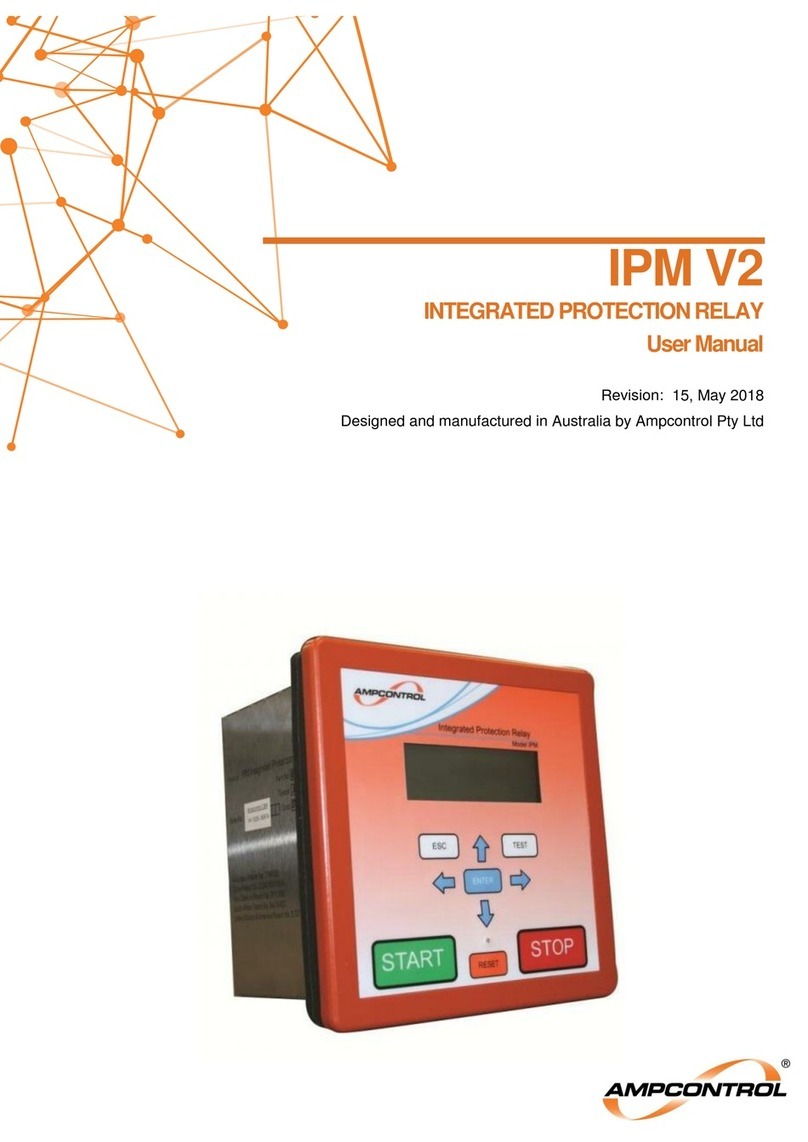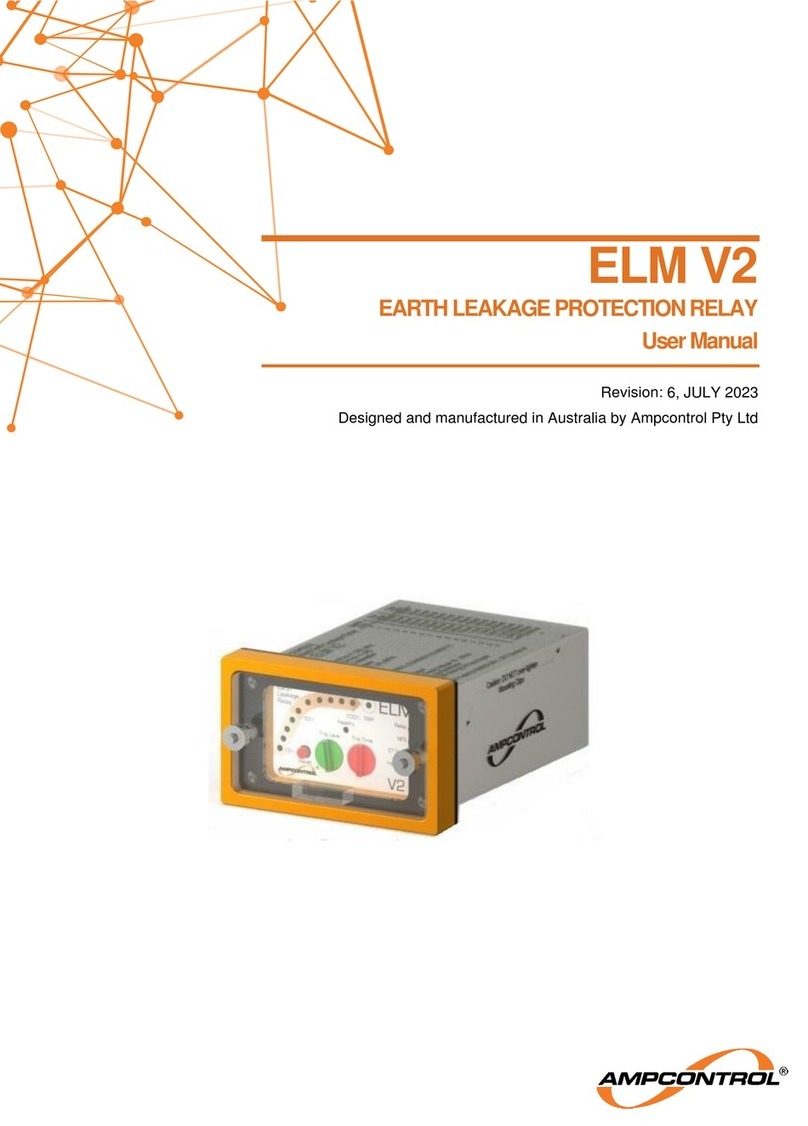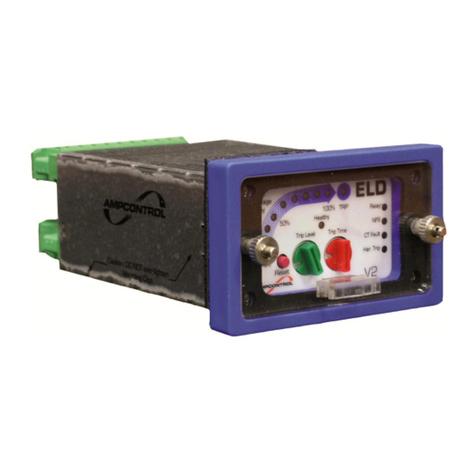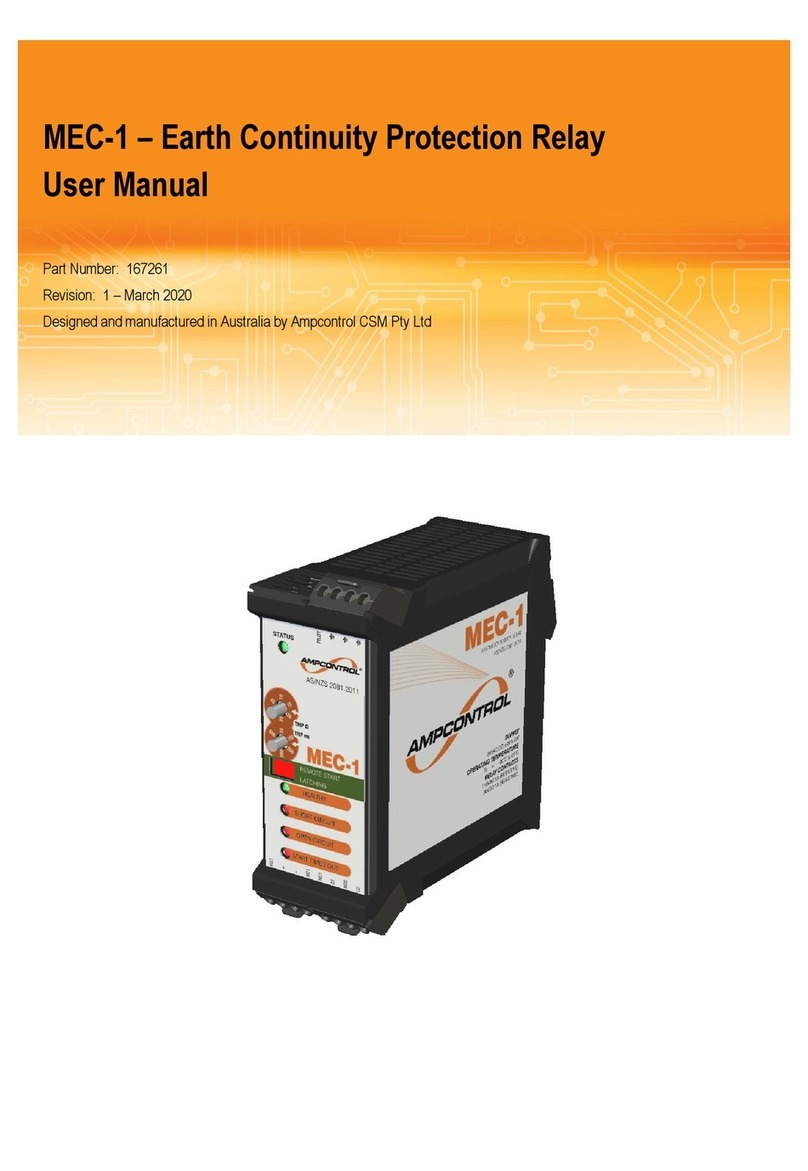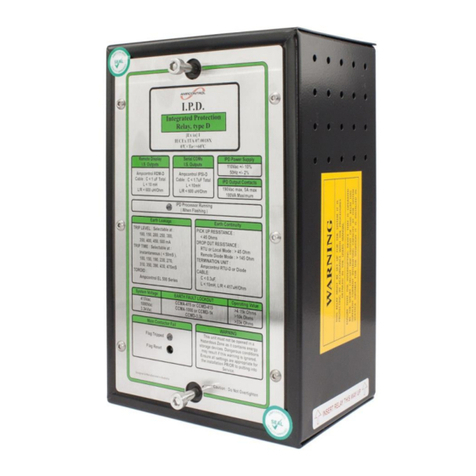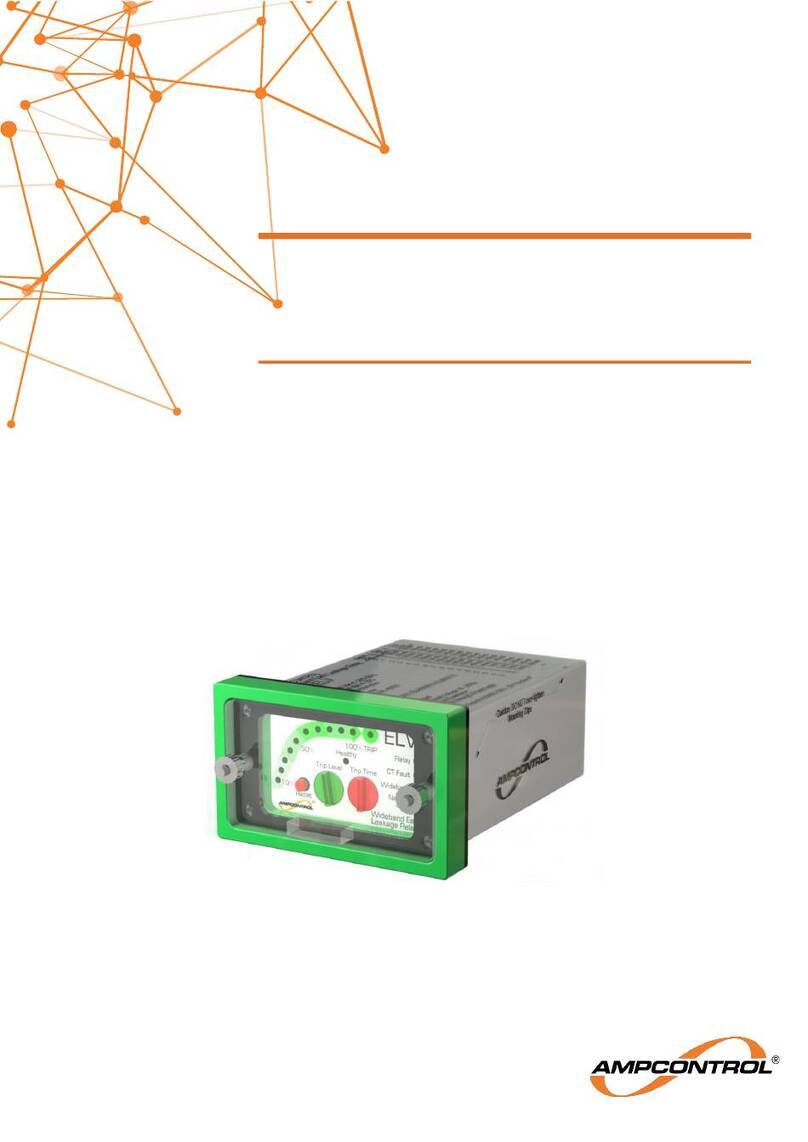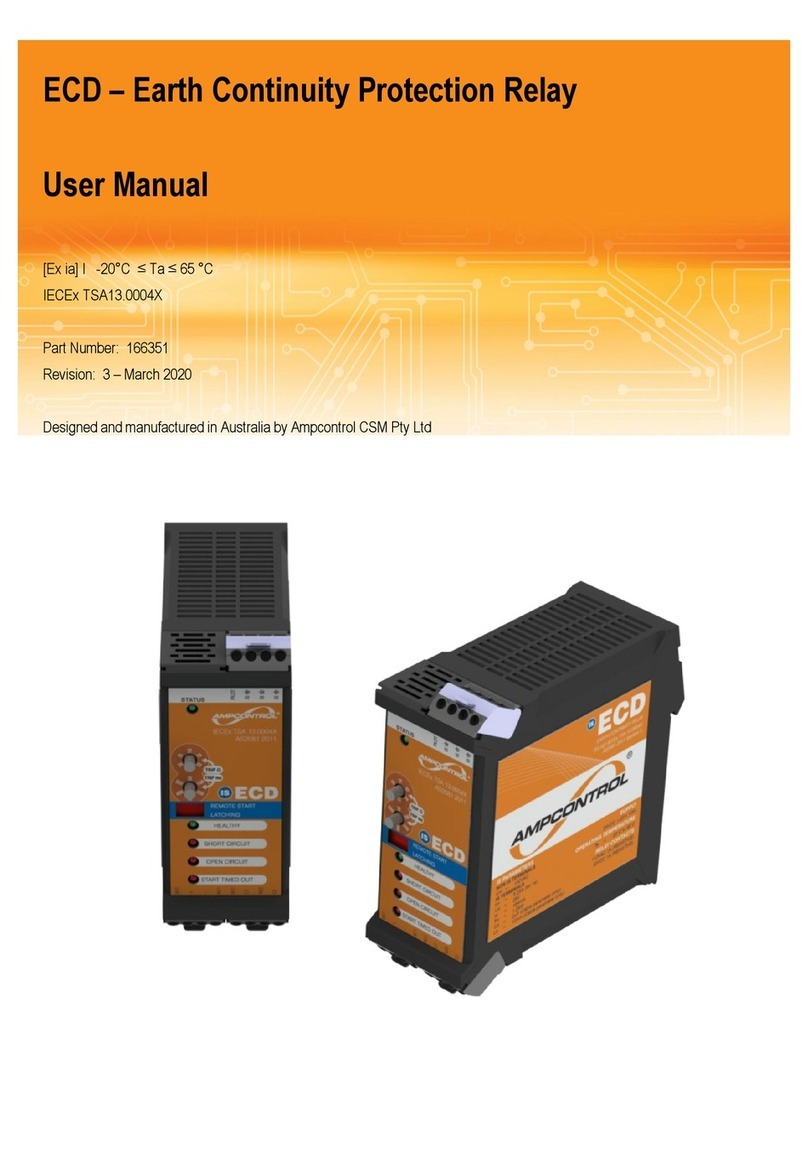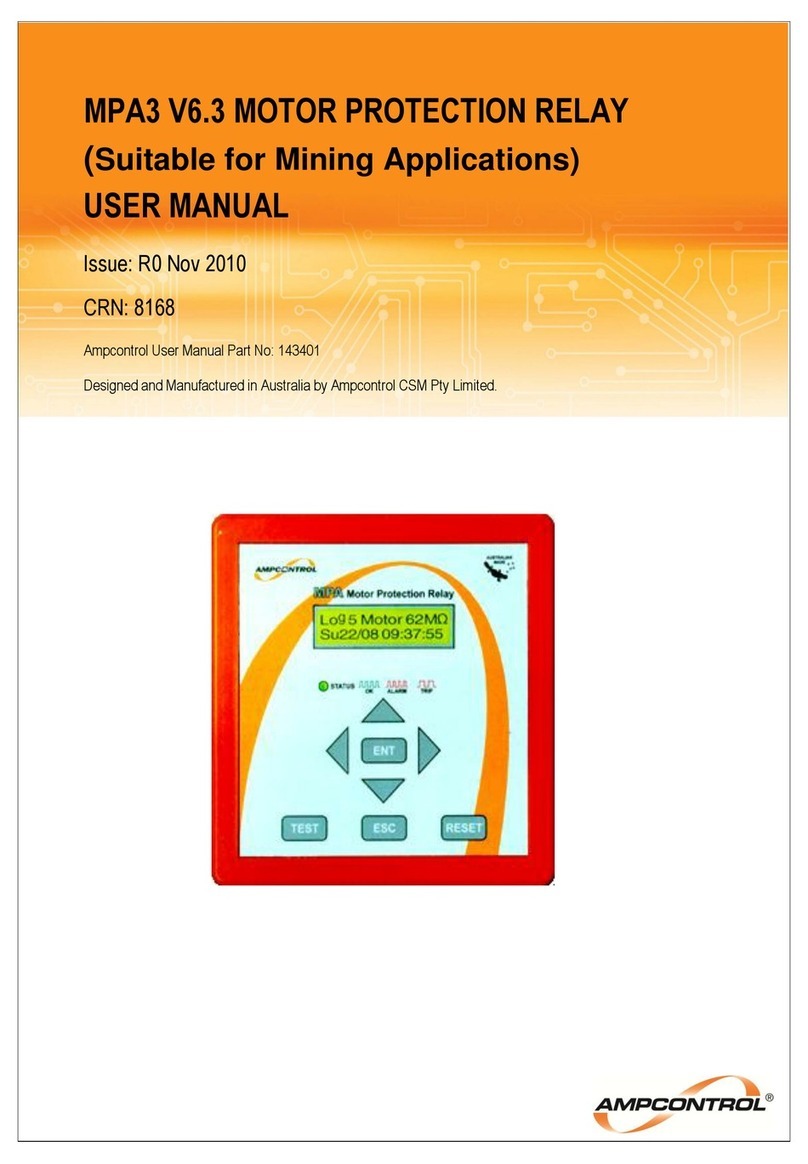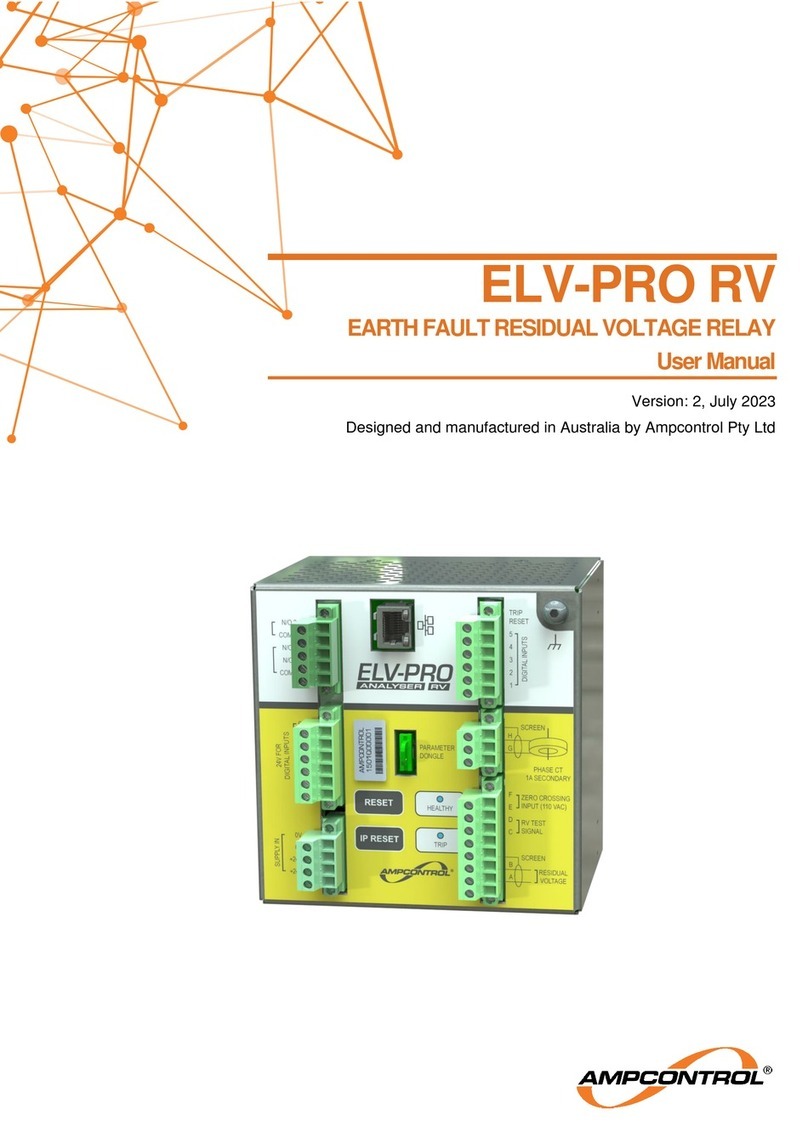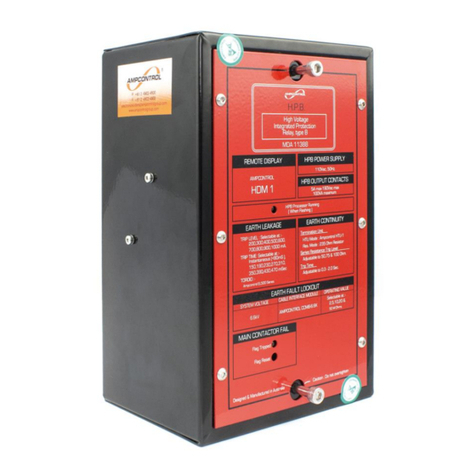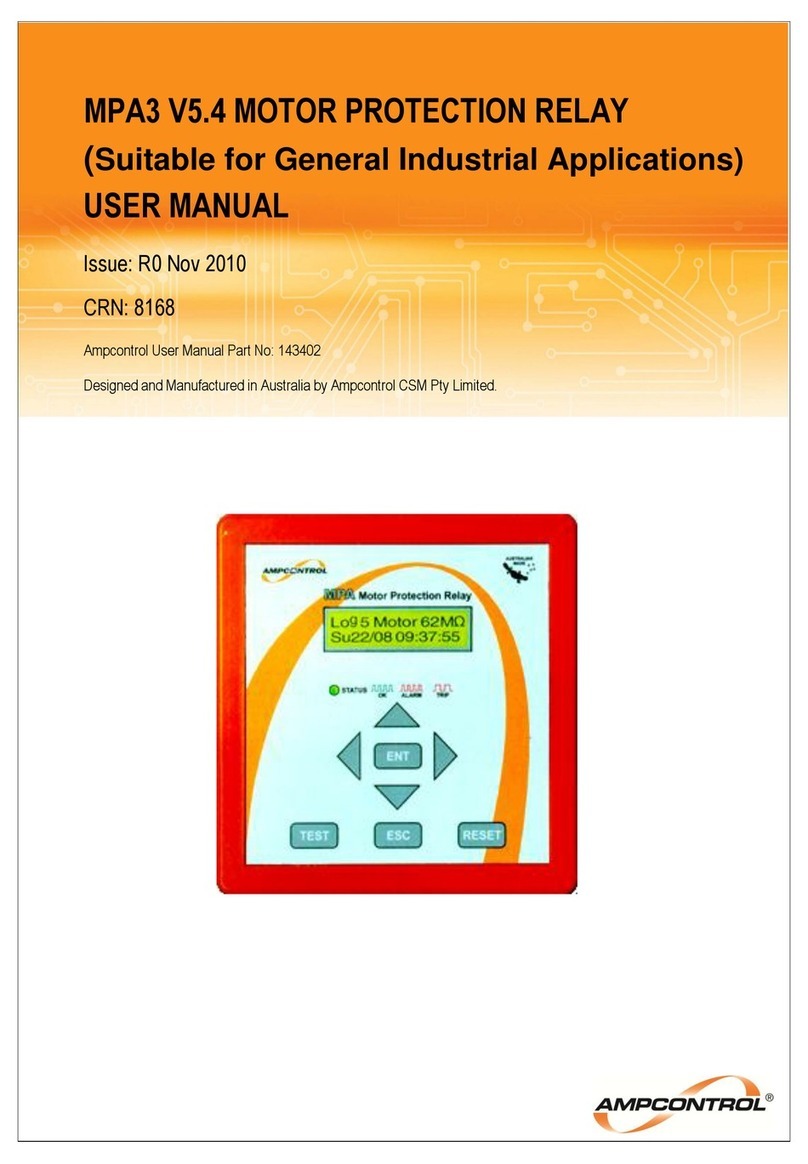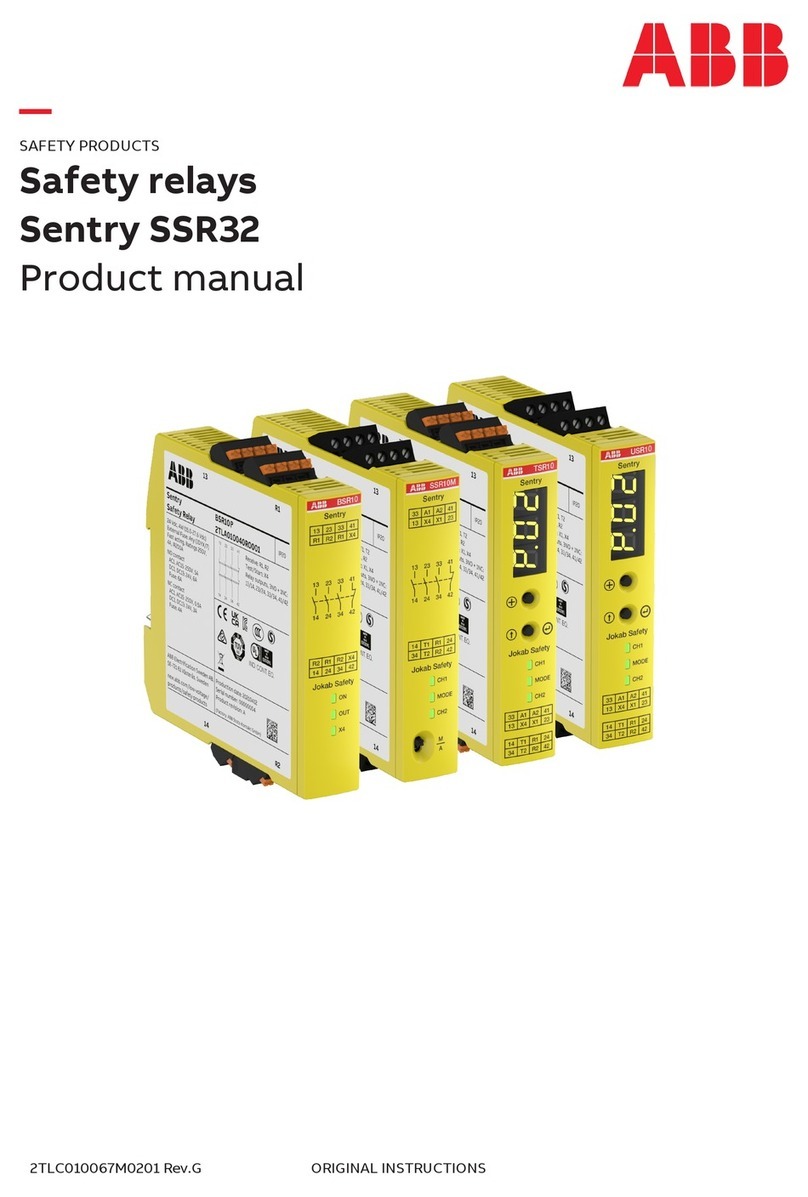
ELM USER MANUAL ISSUE 4
-4-
3. ELM Earth Leakage Relay
3.1 Description
The Ampcontrol ELM Earth Leakage Relay is
electronic in design and is based on
microprocessor technology. The 'Healthy' LED
flashes to indicate correct operation of the
microprocessor. The Relay uses a toroid to
measure earth fault current. A definite time
operating characteristic is provided with
adjustable trip sensitivity and time delay.
When a fault occurs and the trip level and time
delay is exceeded the relay’s trip function is
activated, operating the trip contacts connected
in the system control circuit. The 'Trip' LED is
'On' when a trip occurs. The trip condition is
latched in non-volatile memory and requires
operation of the reset input to clear the trip
condition. An internal reset is also provided on
the facia of the relay. The 'Relay' LED is 'On'
to indicate the relay is energised.
A ten-segment LED bar graph indicates the %
of leakage level being detected. This reading
can be remotely monitored/displayed using the
4-20mA Output of the Relay. When the relay
measures currents with frequencies much
greater than 50Hz the bar graph LED fast
flashes (5Hz) instead of being steady. Should
the high frequency current persist until the
time delay is exceeded the relay will trip. The
'Har.Trip' LED (Harmonic Trip) is 'On' when a
trip occurs.
The ELM Earth Leakage Relay is housed in a
stainless steel case and can be either ‘DIN
Rail’ mounted or ‘Panel Mounted’ through a
69 x 39mm cut out. When panel mounted the
front of the ELM Relay is designed to provide
IP-56 ingress protection. There is provision to
prevent unauthorised adjustment of the trip
settings by sealing the post (in front of the
knurled nut) with a lead seal, thus preventing
the removal of the front facia cover.
An internal switch mode power supply allows
the ELM to operate from 24VAC to 132VAC
or 20VDC to 185VDC.
The ELM Relay has been designed and tested
for use on fault-limited systems. To ensure
maximum protection the earth leakage system
should be used in conjunction with the other
protection systems covered by AS2081. The
collective systems are designed to limit touch
and step potentials.
The relay is also suitable for industry where
equipment or system earth leakage protection
is required. The relay is not suitable for
personal protection, which requires trip levels
of 20-30mA, with instantaneous operation.
(Refer AS3190).
The ELM Relay continually monitors the
toroid and if the connection is lost the relay
will trip and flash the ‘CT Fault LED’.
3.2 Methods of Earth Leakage Protection
The ELM Relay is suitable for the two
methods of protection used. They are the Core
Balance and Series Neutral earth leakage
protection systems. (See previous section for
details).
3.3 Testing Procedure
A test current is injected through the window
of the toroid to test the operation of the relay
(See typical connection diagram, Page 6). To
reset the relay press the button located on the
facia of the relay or provide an external
normally open contact (it is recommended that
a twisted pair be used between the N/O contact
and the reset input). The reset button is also
used to access the memory of the processor to
view the maximum level of leakage since the
previous trip. A section of the bar graph will
slow flash (2Hz) indicating the peak level
while, the reset button is held closed and will
continue to flash for 1 second after the reset
button is released.
3. 4 Toroids
The ELM Relay is designed for use with
Ampcontrol EL500S series Toroids. They are
available with window sizes 25, 60 & 85mm.
These allow trip settings from 100mA to 2.5A.
3.5 Mode of Operation
The relay can be operated in fail-safe or non-
fail safe modes of operation.
Fail Safe Mode:
This mode is the default and preferred
method, where the relay drops out on fault
or loss of power. Power to the relay is from
the line side of the isolating device or from
an independent supply.
Non Fail Safe Mode:
In this mode of operation the relay picks up
on fault. This method should only be used
when the supply to the relay is only
available from the load side of the isolating
